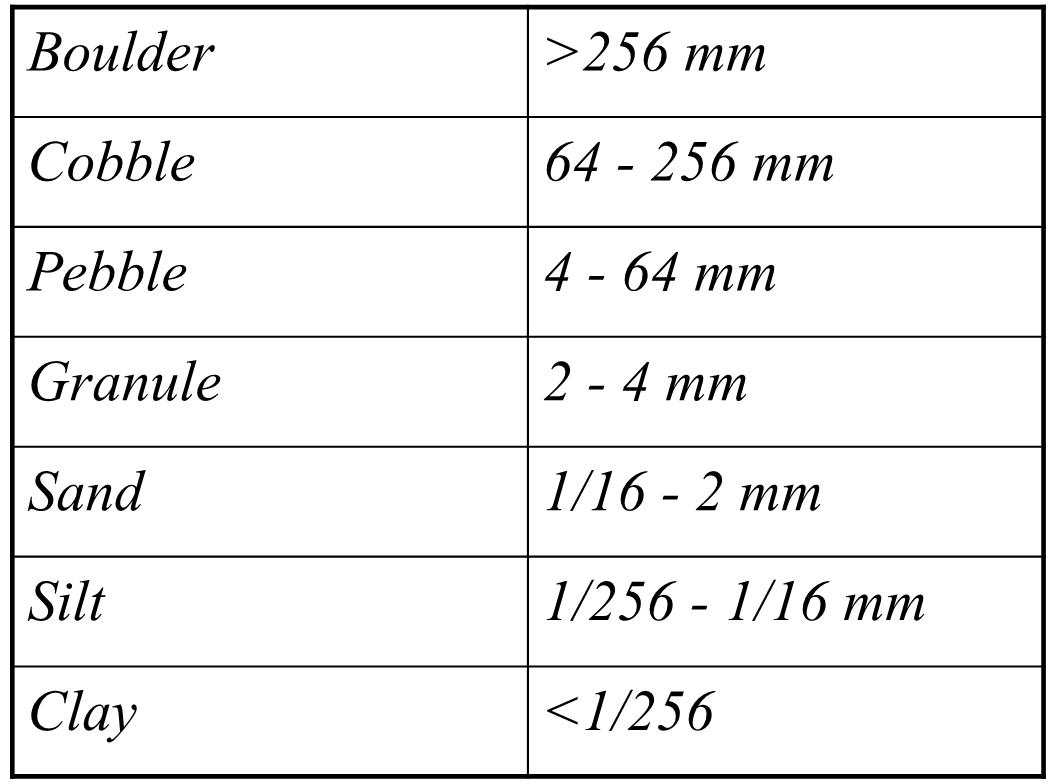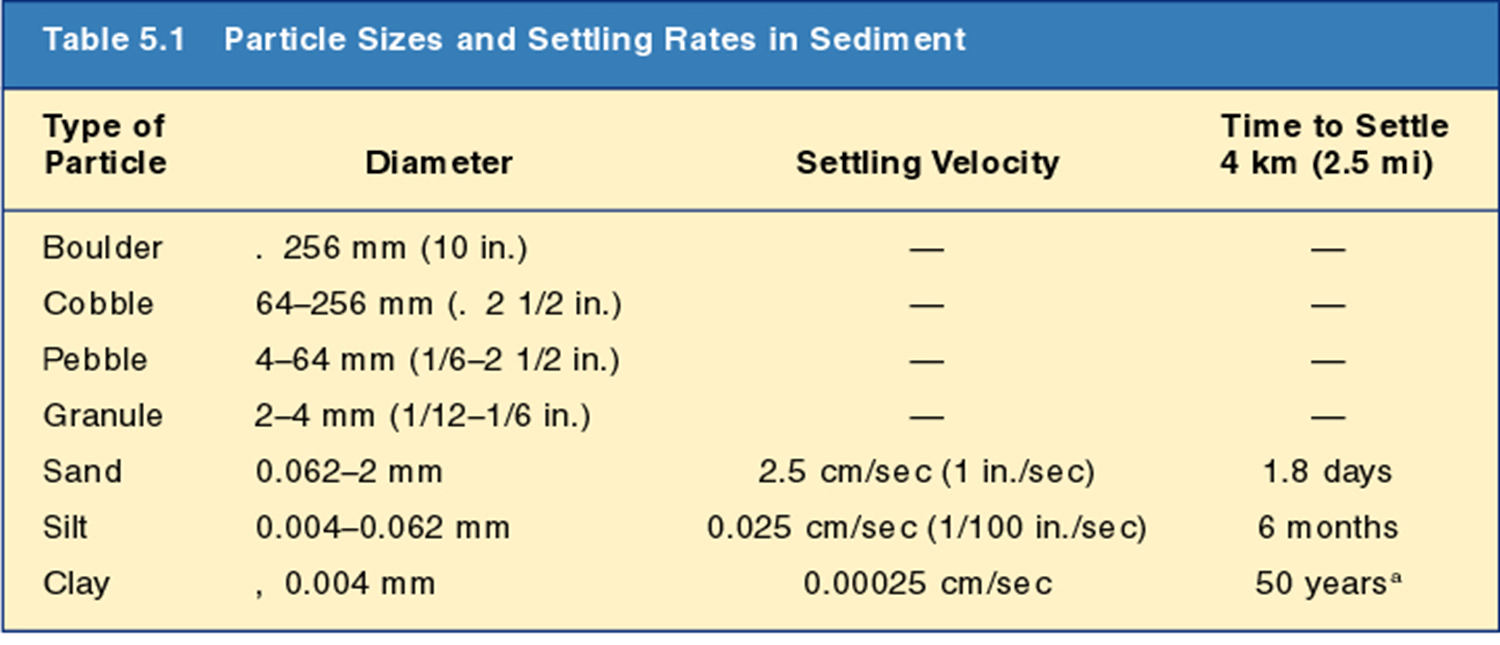#1: Particle Size
All rocks are composed of various minerals. Wind, rain, running water, ice and chemical weathering all work to break down rocks into smaller and smaller pieces; eventually, rocks are broken into individual mineral fragments and then minerals are broken down into the elements that form them.
Both terrestrial and marine sediments are classified by size using the same scale. Boulder is the largest particle size, followed by cobble, pebble, gravel (or granule), sand, silt and clay.

It takes energy to move particles. The larger or heavier the particle, the more energy it will take to move it. Lower the energy level and the particle will be deposited instead of moved. The image below illustrates this point. Larger and heavier particles such as boulders require very high energy levels to move, and only a small drop in energy to be deposited. Conversely, very small and light particles such as silts and clays barely need any energy to move them, and need very quiet water to be deposited.

So, how long does it take for a particle to settle all the way from the surface to the sea floor? That depends on the particle size. The table below lists how long it will take for each size.
